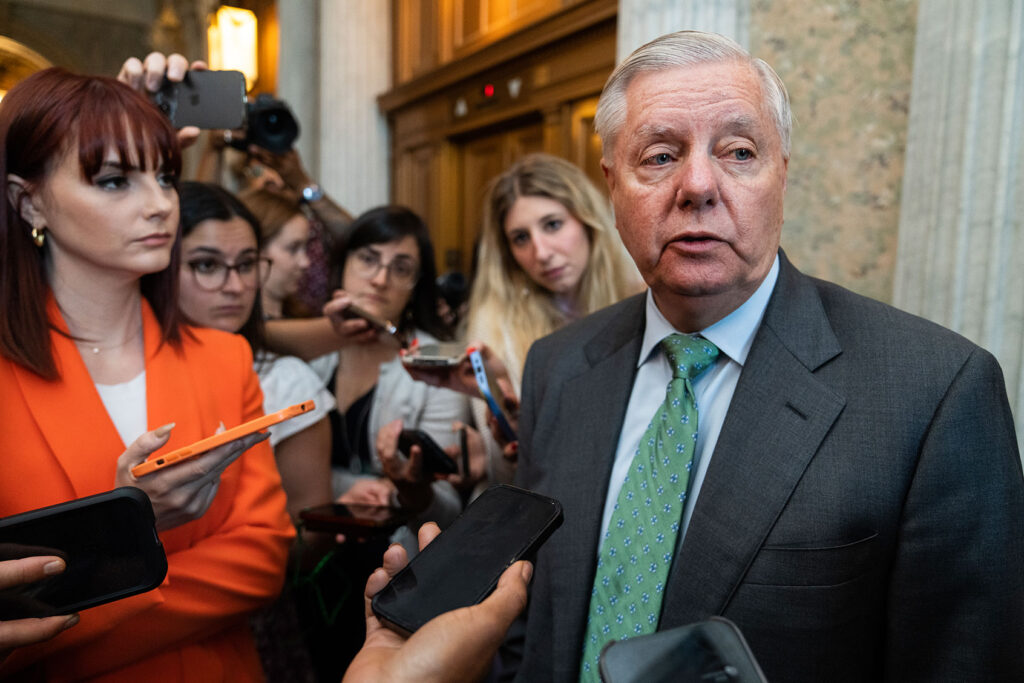
Why does the press continue to interview Lindsey Graham? The Republican senator from South Carolina, once seen as a moderate, has become a figure of controversy. After the January 6, 2021, Capitol riot, Graham famously declared, “Count me out. Enough is enough,” criticizing the baseless claims of election fraud. Yet, he swiftly realigned himself with former President Donald Trump, becoming a frequent golf partner and staunch ally.
This shift raises questions about the media’s role in amplifying voices like Graham’s. Despite his inconsistent stance, the press remains eager to capture his comments, often overshadowing more substantive discussions. This phenomenon isn’t isolated to Graham; it reflects a broader pattern of media engagement with figures who support Trump’s agenda.
The Media’s Role in Amplifying Controversial Figures
The ongoing coverage of Graham and similar political figures highlights a critical issue: the media’s tendency to prioritize sensationalism over substance. This approach can be traced back to historical precedents where controversial figures were given platforms, often at the expense of balanced reporting.
During the Civil War, for instance, Northern press outlets did not routinely seek the perspectives of Confederate politicians to maintain balanced coverage. Similarly, in 1930s Germany, the press did not sanitize the Nazi movement by providing platforms for figures like Joseph Goebbels or Hermann Göring. Yet, today’s media landscape often seems intent on presenting “both sides,” even when one side is rooted in misinformation.
The Rise of Satirical Journalism as a Truth-Telling Medium
In response to the media’s challenges in addressing disinformation, satirical journalism has emerged as a powerful tool for truth-telling. Publications like The Onion and The Borowitz Report offer biting critiques of current events, often cutting through the noise with humor and clarity.
Recent Onion headlines, such as “Bezos Wedding Guests Given Monogrammed Plastic Water Bottles to Urinate Into During Ceremony,” highlight the absurdity of certain societal trends in a way traditional journalism struggles to match.
Late-night talk show hosts, including Stephen Colbert, John Oliver, and Seth Meyers, have also become key figures in resisting the erosion of political norms. Their satirical commentary provides a counter-narrative to the mainstream media’s often cautious approach.
Supporting Independent and Investigative Journalism
Despite the challenges, there are journalists and outlets committed to rigorous reporting on the state of democracy. Publications like The Nation, The Atlantic, and Mother Jones, along with writers such as Heather Cox Richardson and Ruth Ben-Ghiat, continue to provide in-depth analysis and commentary.
These voices are crucial in an era where misinformation can spread rapidly. Supporting independent journalism is more important than ever, as it offers a counterbalance to the sensationalism that often dominates mainstream media.
“A Lie can run halfway around the world before the Truth gets its boots on,” a truism that underscores the need for vigilant and truthful reporting.
The Future of Media Engagement with Political Figures
As for Lindsey Graham, his status as a U.S. senator with direct access to Trump ensures that the media will continue to seek his perspective. However, it’s worth questioning whether his contributions genuinely enhance public discourse or merely perpetuate a cycle of sensationalism.
The media’s responsibility is to inform the public with accuracy and integrity. As such, there should be a conscious effort to prioritize voices that contribute meaningfully to the national conversation, rather than those that distract or mislead.
In conclusion, while figures like Graham will remain in the spotlight, it’s imperative for the media to reflect on its role in shaping public perception. By focusing on substance over sensationalism, the press can better serve its audience and uphold the principles of journalism.




